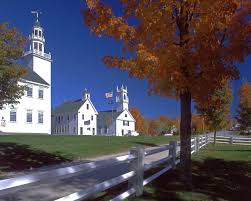Summer Background Wallpaper Biography
Summer s the warmest of the four temperate seasons, between spring and autumn. At the summer solstice, the days are longest and the nights are shortest, with day-length decreasing as the season progresses after the solstice. The date of the beginning of summer varies according to climate, culture, and tradition, but when it is summer in the Northern Hemisphere it is winter in the Southern Hemisphere, and vice versa.
From an astronomical view, the equinoxes and solstices would be the middle of the respective seasons,but a variable seasonal lag means that the meteorological start of the season, which is based on average temperature patterns, occurs several weeks later than the start of the astronomical season.According to meteorologists, summer extends for the whole months of June, July, and August in the northern hemisphere and the whole months of December, January, and February in the southern hemisphere. Under meteorological definitions, all seasons are arbitrarily set to start at the beginning of a calendar month and end at the end of a month. This meteorological definition of summer also aligns with the commonly viewed notion of summer as the season with the longest (and warmest) days of the year (365 days), in which daylight predominates. The meteorological reckoning of seasons is used in Austria, Denmark and the former USSR; it is also used by many in the United Kingdom, where summer is thought of as extending from mid-May to mid-August. In Ireland, the summer months according to the national meteorological service, Met Éireann, are June, July and August. However, according to the Irish Calendar summer begins 1 May and ends 1 August. School textbooks in Ireland follow the cultural norm of summer commencing on 1 May rather than the meteorological definition of 1 June.
From the astronomical perspective, days continue to lengthen from equinox to solstice and summer days progressively shorten after the solstice, so meteorological summer encompasses the build-up to the longest day and a diminishing thereafter, with summer having many more hours of daylight than spring. Solstices and equinoxes are taken to mark the mid-points, not the beginnings, of the seasons. Midsummer takes place over the shortest night of the year, which is the summer solstice, or on a nearby date that varies with tradition.
The Western definition based on solstice to equinox is more frequently used where a temperature lag of up to half a season is common.n North America, summer is often the period from the summer solstice (usually June 20 or 21 in the Northern Hemisphere) to the autumn equinox According to the American calendar, the U.S. summer season is commonly regarded as beginning on Memorial Day weekend (the last weekend in May) and ending on Labor Day weekend (the first weekend in September), more closely in line with the meteorological definition.
In Chinese astronomy, summer starts on or around 5 May, with the known as establishment of summer", and it ends on or around 6 August.
Summer is traditionally associated with hot dry weather, but this does not occur in all regions. In areas of the tropics and subtropics, the wet season occurs during the summer. The wet season is the main period of vegetation growth within the savanna climate regime.[13] Where the wet season is associated with a seasonal shift in the prevailing winds, it is known as a monsoon.n the Northern Atlantic Ocean, a distinct tropical cyclone season occurs from 1 June to 30 November. The statistical peak of the Atlantic hurricane season is 10 September. The Northeast Pacific Ocean has a broader period of activity, but in a similar time frame to the Atlantic.








Summer s the warmest of the four temperate seasons, between spring and autumn. At the summer solstice, the days are longest and the nights are shortest, with day-length decreasing as the season progresses after the solstice. The date of the beginning of summer varies according to climate, culture, and tradition, but when it is summer in the Northern Hemisphere it is winter in the Southern Hemisphere, and vice versa.
From an astronomical view, the equinoxes and solstices would be the middle of the respective seasons,but a variable seasonal lag means that the meteorological start of the season, which is based on average temperature patterns, occurs several weeks later than the start of the astronomical season.According to meteorologists, summer extends for the whole months of June, July, and August in the northern hemisphere and the whole months of December, January, and February in the southern hemisphere. Under meteorological definitions, all seasons are arbitrarily set to start at the beginning of a calendar month and end at the end of a month. This meteorological definition of summer also aligns with the commonly viewed notion of summer as the season with the longest (and warmest) days of the year (365 days), in which daylight predominates. The meteorological reckoning of seasons is used in Austria, Denmark and the former USSR; it is also used by many in the United Kingdom, where summer is thought of as extending from mid-May to mid-August. In Ireland, the summer months according to the national meteorological service, Met Éireann, are June, July and August. However, according to the Irish Calendar summer begins 1 May and ends 1 August. School textbooks in Ireland follow the cultural norm of summer commencing on 1 May rather than the meteorological definition of 1 June.
From the astronomical perspective, days continue to lengthen from equinox to solstice and summer days progressively shorten after the solstice, so meteorological summer encompasses the build-up to the longest day and a diminishing thereafter, with summer having many more hours of daylight than spring. Solstices and equinoxes are taken to mark the mid-points, not the beginnings, of the seasons. Midsummer takes place over the shortest night of the year, which is the summer solstice, or on a nearby date that varies with tradition.
The Western definition based on solstice to equinox is more frequently used where a temperature lag of up to half a season is common.n North America, summer is often the period from the summer solstice (usually June 20 or 21 in the Northern Hemisphere) to the autumn equinox According to the American calendar, the U.S. summer season is commonly regarded as beginning on Memorial Day weekend (the last weekend in May) and ending on Labor Day weekend (the first weekend in September), more closely in line with the meteorological definition.
In Chinese astronomy, summer starts on or around 5 May, with the known as establishment of summer", and it ends on or around 6 August.
Summer is traditionally associated with hot dry weather, but this does not occur in all regions. In areas of the tropics and subtropics, the wet season occurs during the summer. The wet season is the main period of vegetation growth within the savanna climate regime.[13] Where the wet season is associated with a seasonal shift in the prevailing winds, it is known as a monsoon.n the Northern Atlantic Ocean, a distinct tropical cyclone season occurs from 1 June to 30 November. The statistical peak of the Atlantic hurricane season is 10 September. The Northeast Pacific Ocean has a broader period of activity, but in a similar time frame to the Atlantic.
Summer Background Wallpaper
Summer Background Wallpaper
Summer Background Wallpaper
Summer Background Wallpaper
Summer Background Wallpaper
Summer Background Wallpaper
Summer Background Wallpaper
Summer Background Wallpaper
Summer Background Wallpaper
Summer Backgrounds.
Summer Wallpaper- Gimme Shelter
No comments:
Post a Comment